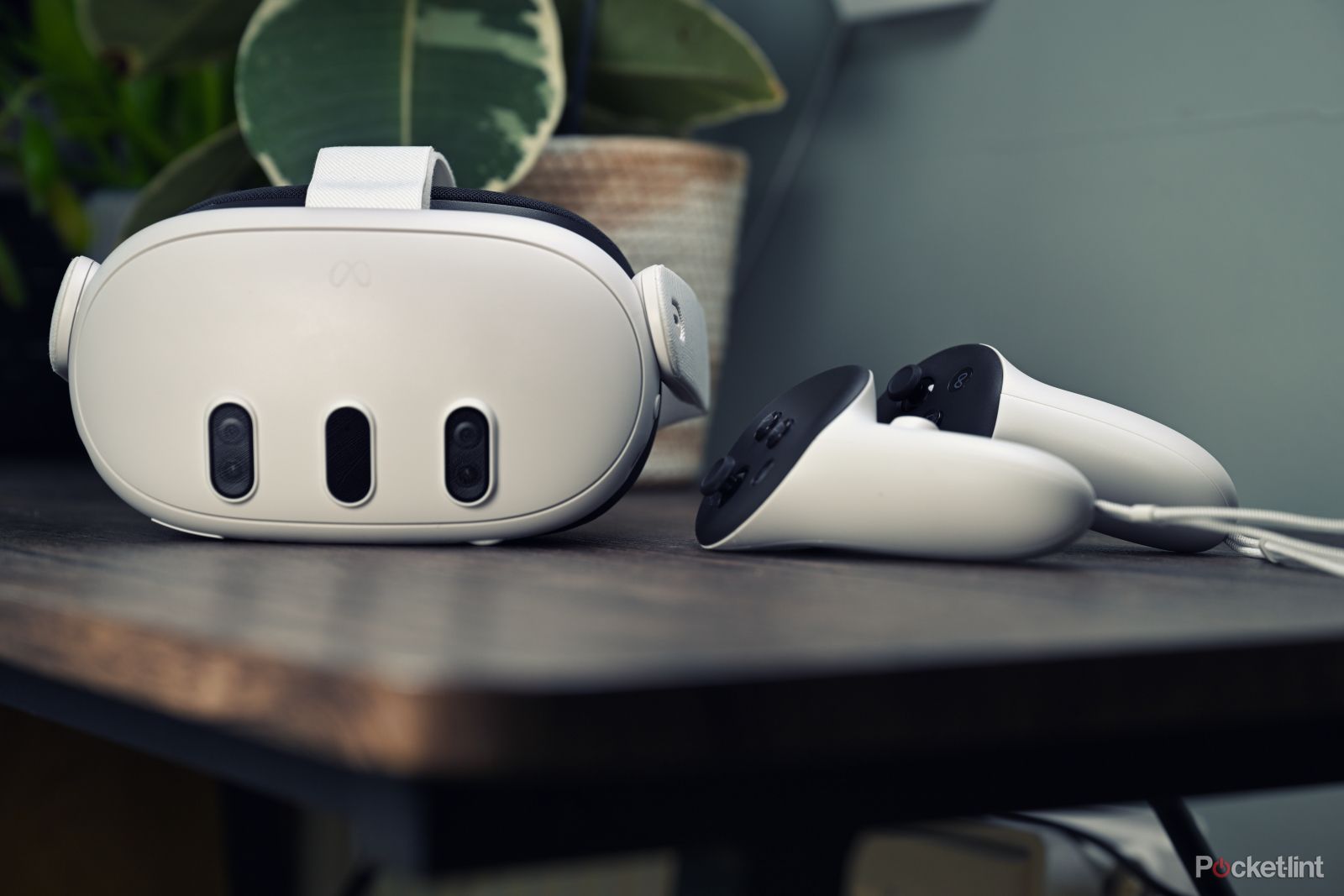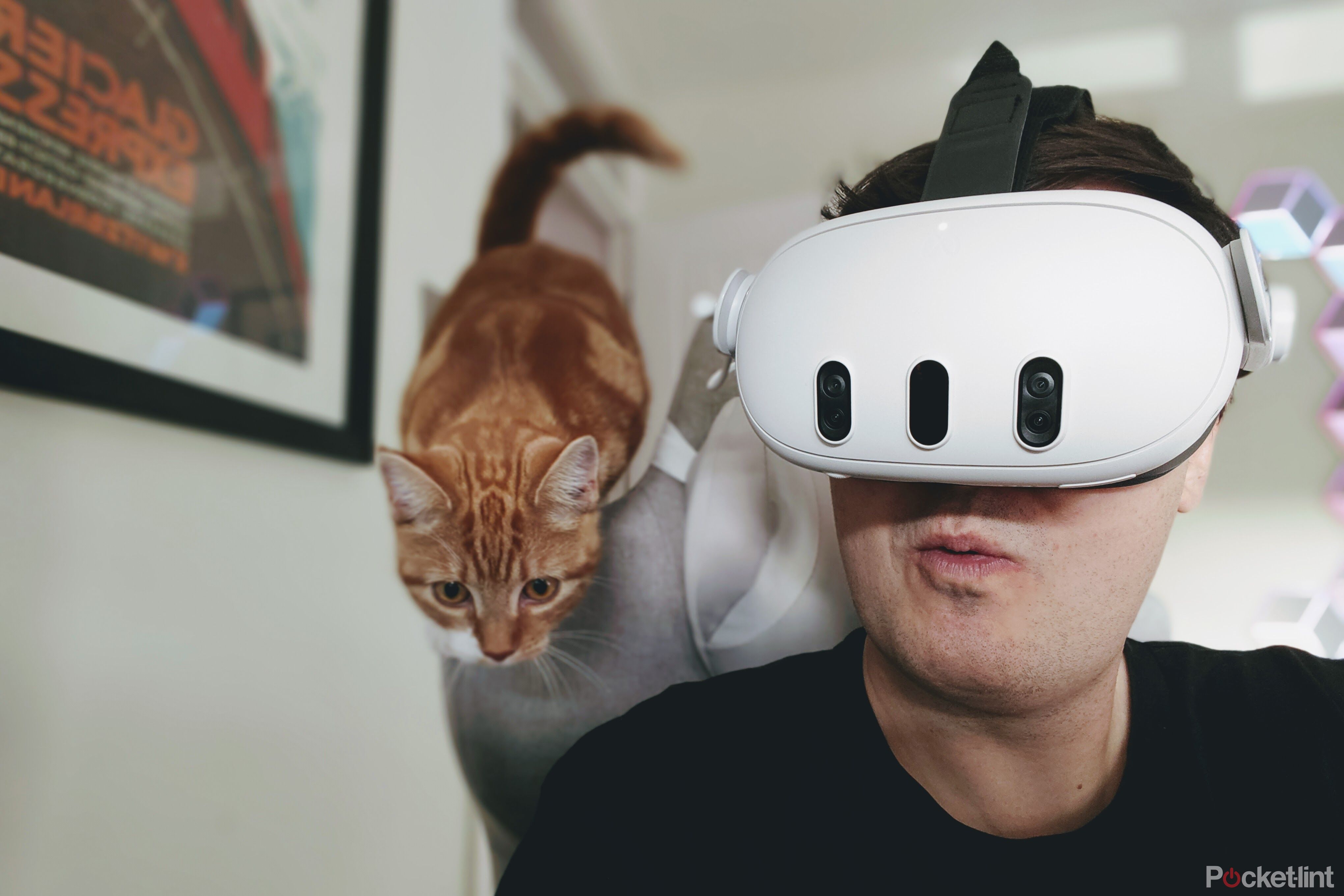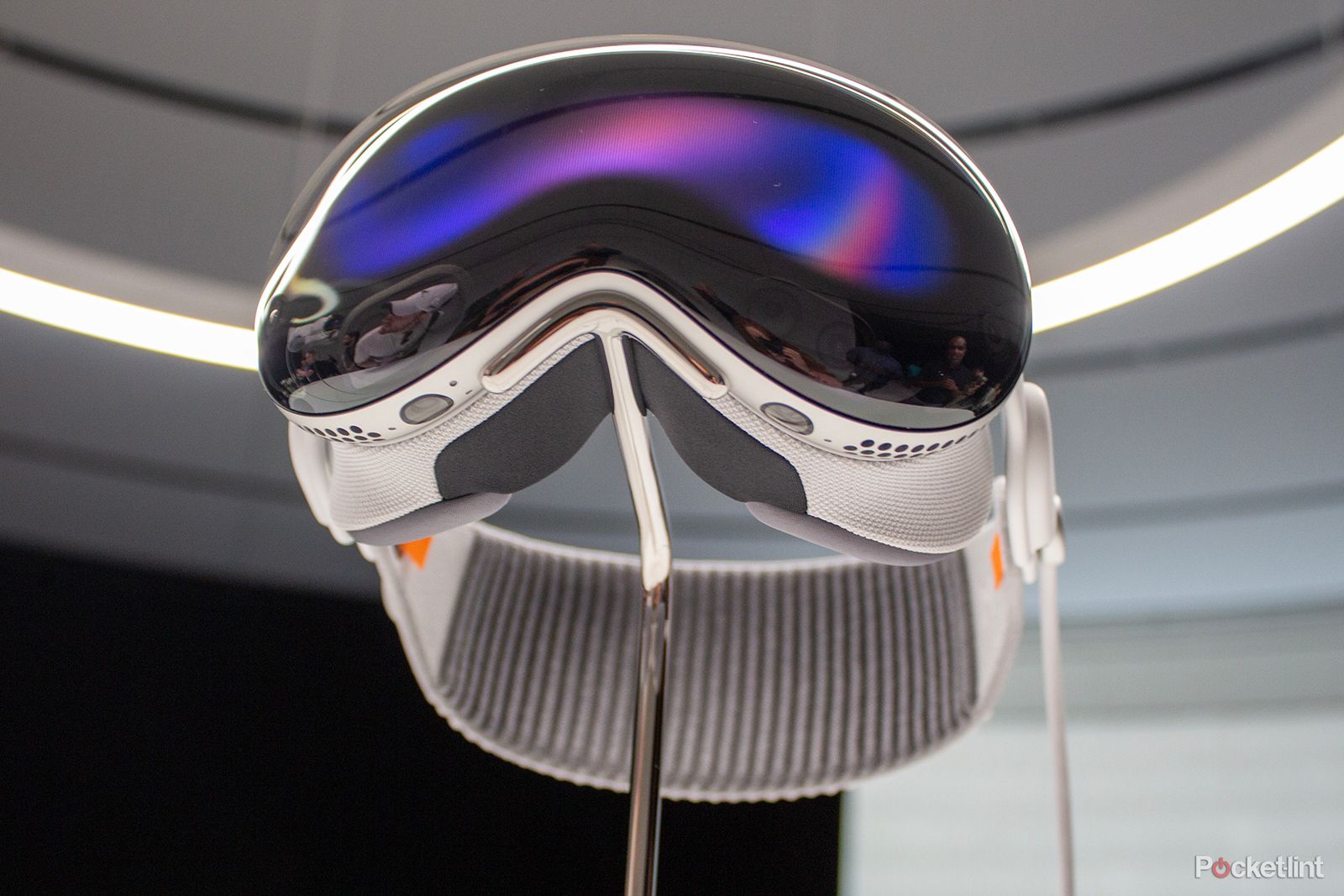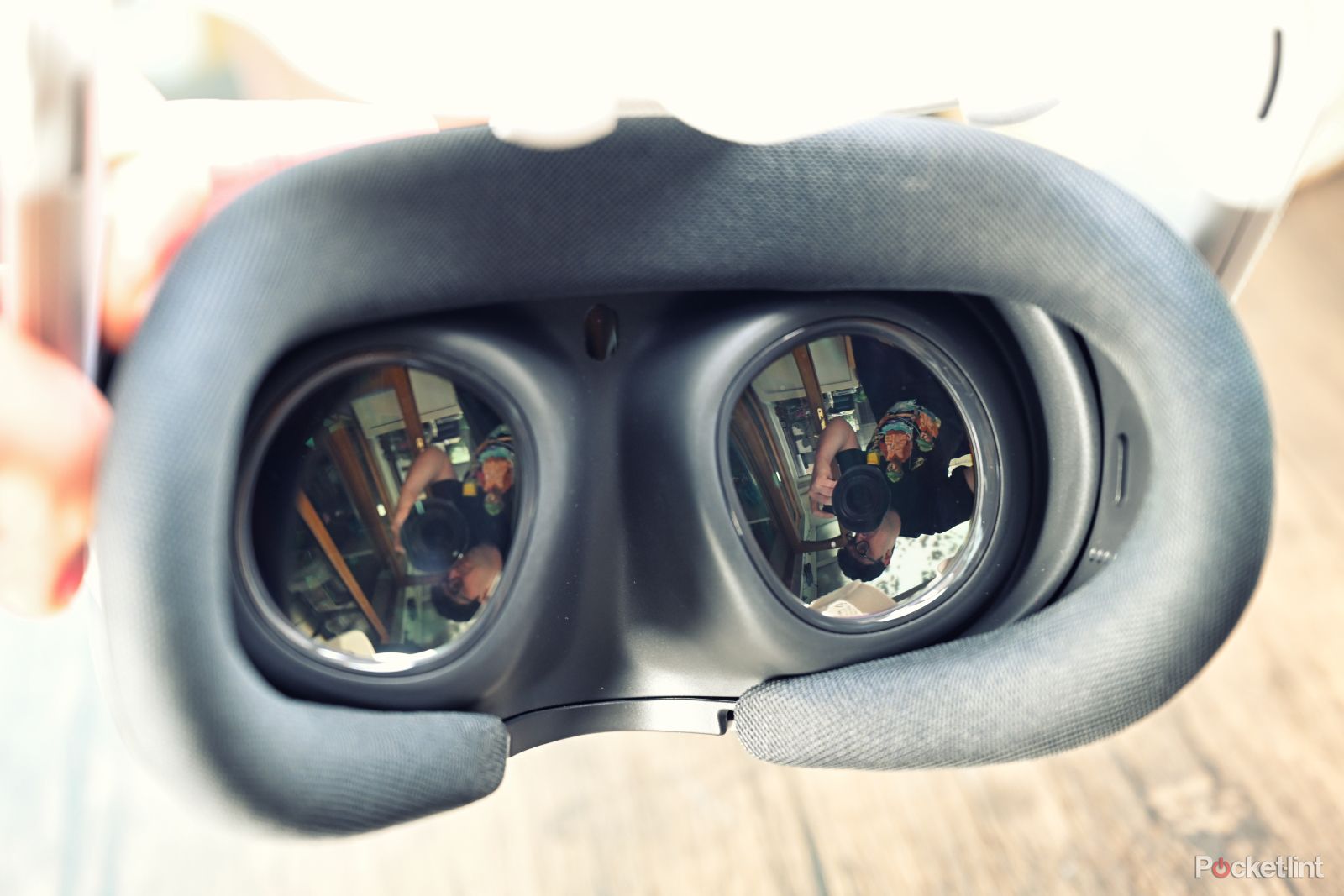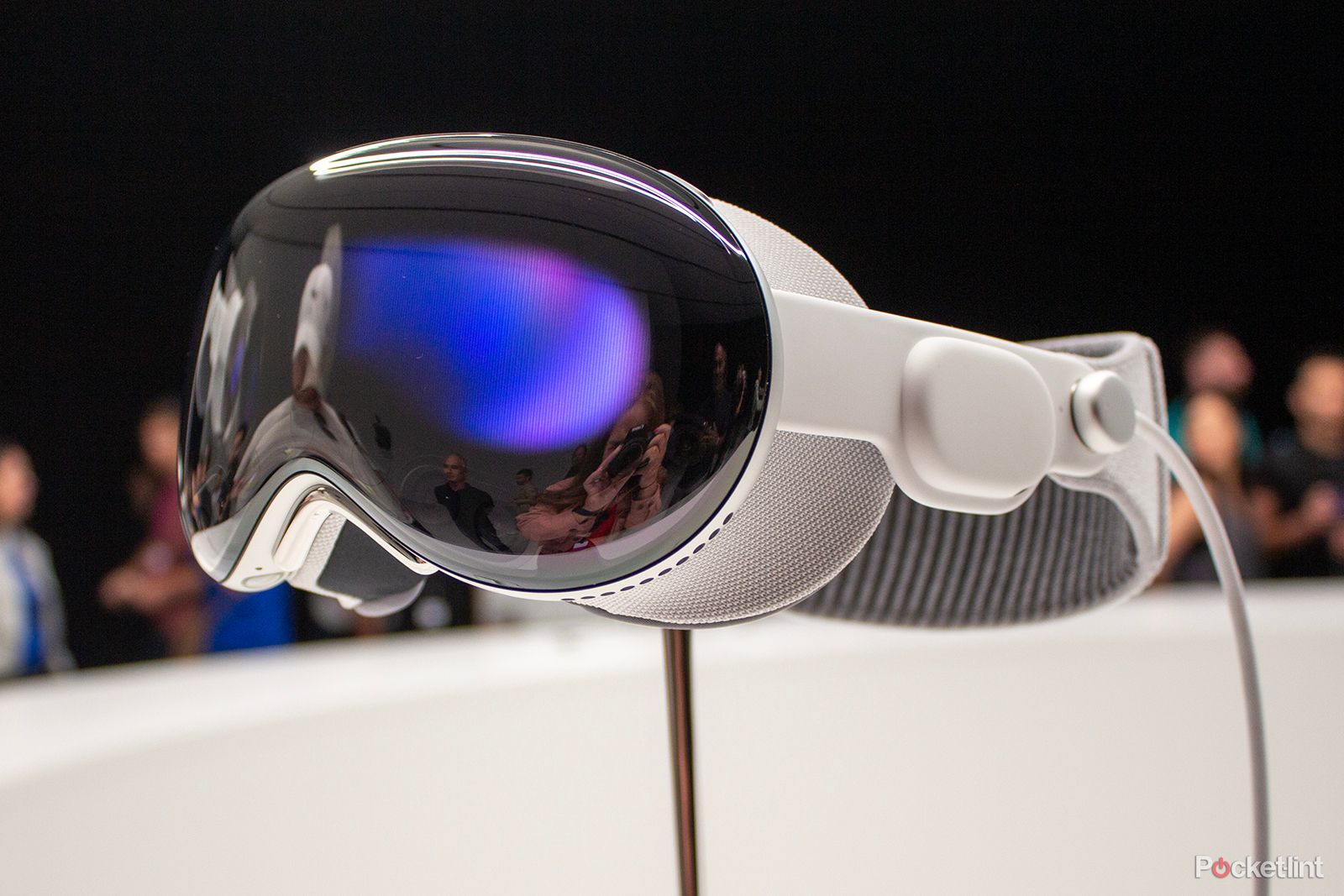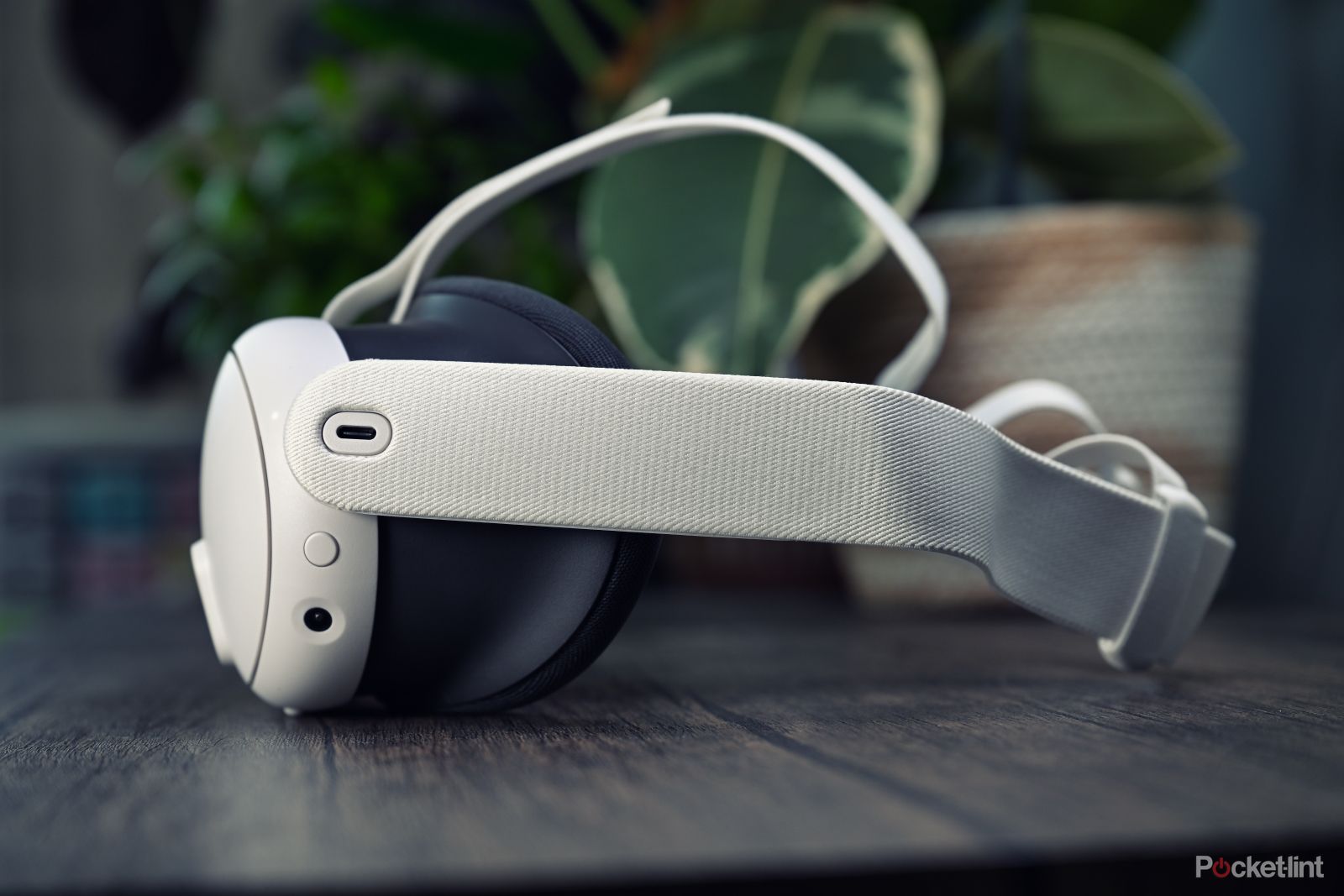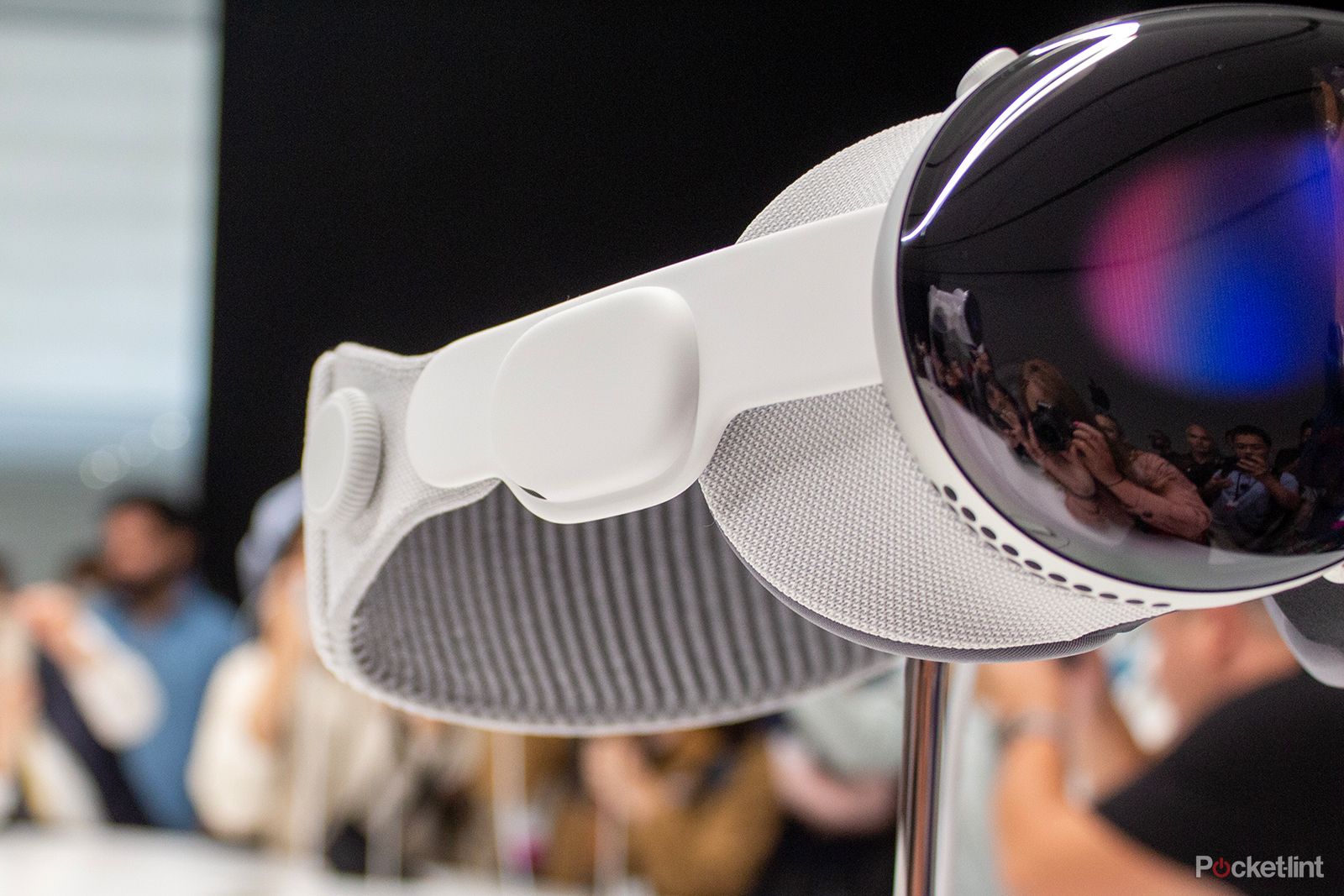-
Meta Quest 3
Best AR/ VR headset overall
The Meta Quest 3 is an improvement over its predecessor in terms of optics and specs. It represents Meta’s latest VR efforts. It’s widely available, features a vast gaming library, and MR experiences.
-
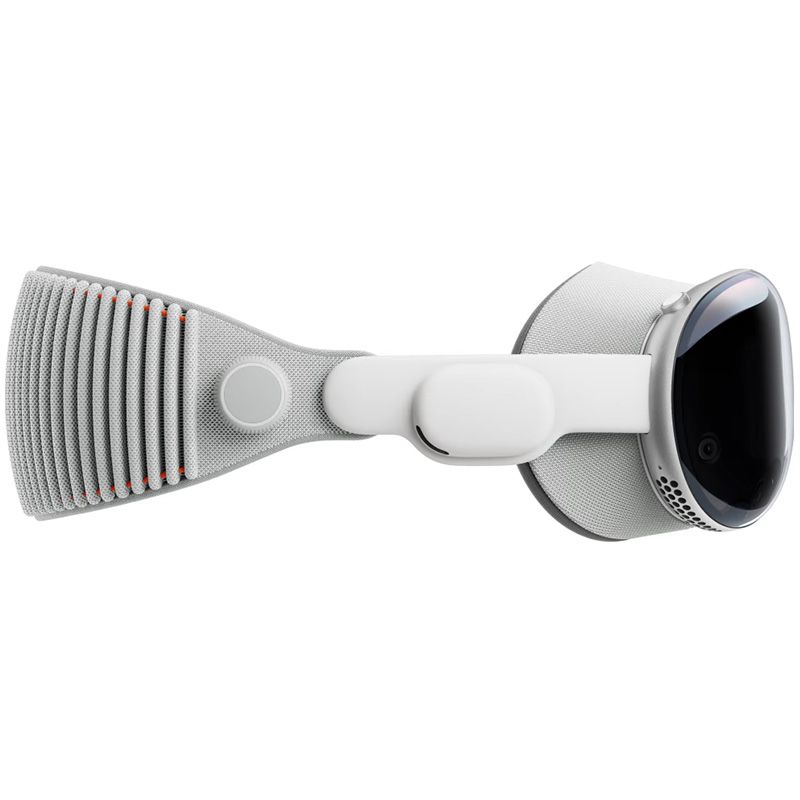
Apple Vision Pro
Best for entertainment
The Apple Vision Pro is Apple’s upcoming foray into AR and VR tech. With powerhouse specs and plenty of tech buried everywhere, the device is, of course, launching with a hefty price tag.
Virtual reality is a very different space than it was even just a few years ago. There are several great VR headsets, including the HTC Vive series, the Oculus Quest series, and the PlayStation VR headset. You can find these products available everywhere with plenty of support from game developers.
However, today, we’re going to talk about the Meta Quest 3 and the Apple Vision Pro. The Meta Quest 3 is Meta’s best product to date, and easily among the best standalone VR headsets on the market. It even does a mixed reality experience very well, and it’s easily the best un-tethered VR headset on the market today.
Meanwhile, the Apple Vision Pro promises to be a technological titan when it eventually launches. Apple has put a ton of effort into the mixed reality headset. In fact, there’s so much effort put into it that it’s been delayed a few times and has suffered from myriad supply chain issues. It’s also wickedly expensive.
The Meta Quest 3 is $500 from multiple retailers. The Apple Vision Pro will retail for $3,499 when it launches, and you’ll have to go to an Apple Store to buy it. Let’s talk about what makes these two products similar and different.
-
Apple Vision Pro Meta Quest 3 Resolution (per eye) 23MP per eye, roughly 4K resolution 2,064 x 2,208 pixels per eye Display Type Micro-OLED Dual LCD, Pancake lenses Storage 1TB / 2TB / 4TB 128GB / 512GB Connectivity Wi-Fi and Bluetooth Wi-Fi 6E, Bluetooth 5.2 Battery Life 2 hours (estimated) 2.4 hours gaming Tracking Technology LEDs and infrared cameras N/A Audio Two speakers with spatial audio Improved near-field speakers Weight ~1 pound (453 grams) 515g Refresh rate 90 Hz 120Hz Processor Apple M2 + Apple R1 Qualcomm Snapdragon XR2 Gen 2 RAM Unknown 8GB
Design
The two headsets sport similar designs, although each company has their own spin. The Meta Quest 3 has a more utilitarian design with a plain white plastic front which houses three pill-shaped modules on the front that hold cameras and other sensors. Behind that is a Y-style head strap that goes over the top and behind the user’s head. Meta also sells Blood Orange and Elemental Blue straps and facial interfaces if you’re into that.
It’s a notable improvement from prior generations, as Meta has worked hard to put the center of gravity closer to the user’s face. That, plus the head strap, makes the Meta Quest 3 sit much more firmly on a person’s head, making it less prone to wobbles and sliding during sudden movements.
Meta also included an IPD adjustment wheel, so you can adjust the distance of the lenses to your eye for maximum eye comfort.
The controllers are also reasonably small and easy to hold with a joystick and two top buttons along with an ad hoc shoulder button on the handle of the controller. They are quite easy to use despite not being able to see them with just a little practice.
The Apple Vision Pro has a much sleeker look. The front, which Apple calls the Enclosure, houses myriad sensors and is masked with an admittedly cool-looking black glass-like design. You get a single strap that goes around the back of the user’s head. Apple doesn’t waste space here. There are two speakers embedded in the strap as it passes by your ears and some additional controls there as well.
The back end of the strap flares out to cradle the back of your head to prevent any pressure points. While the Y-style strap on the Meta Quest 3 certainly looks more stable, Apple includes what it calls a Fit Dial that tightens the strap for a secure fit. There will also be an optional strap that goes over the top of the user’s head for a more stable fit if needed.
Unlike the Meta Quest 3, the Vision Pro’s battery is tethered to the headset by the left strap. This adds an extra cable for users to contend with. However, you can plug the battery pack into its charger without taking off the headset, which helps alleviate its reportedly lower than average battery life.
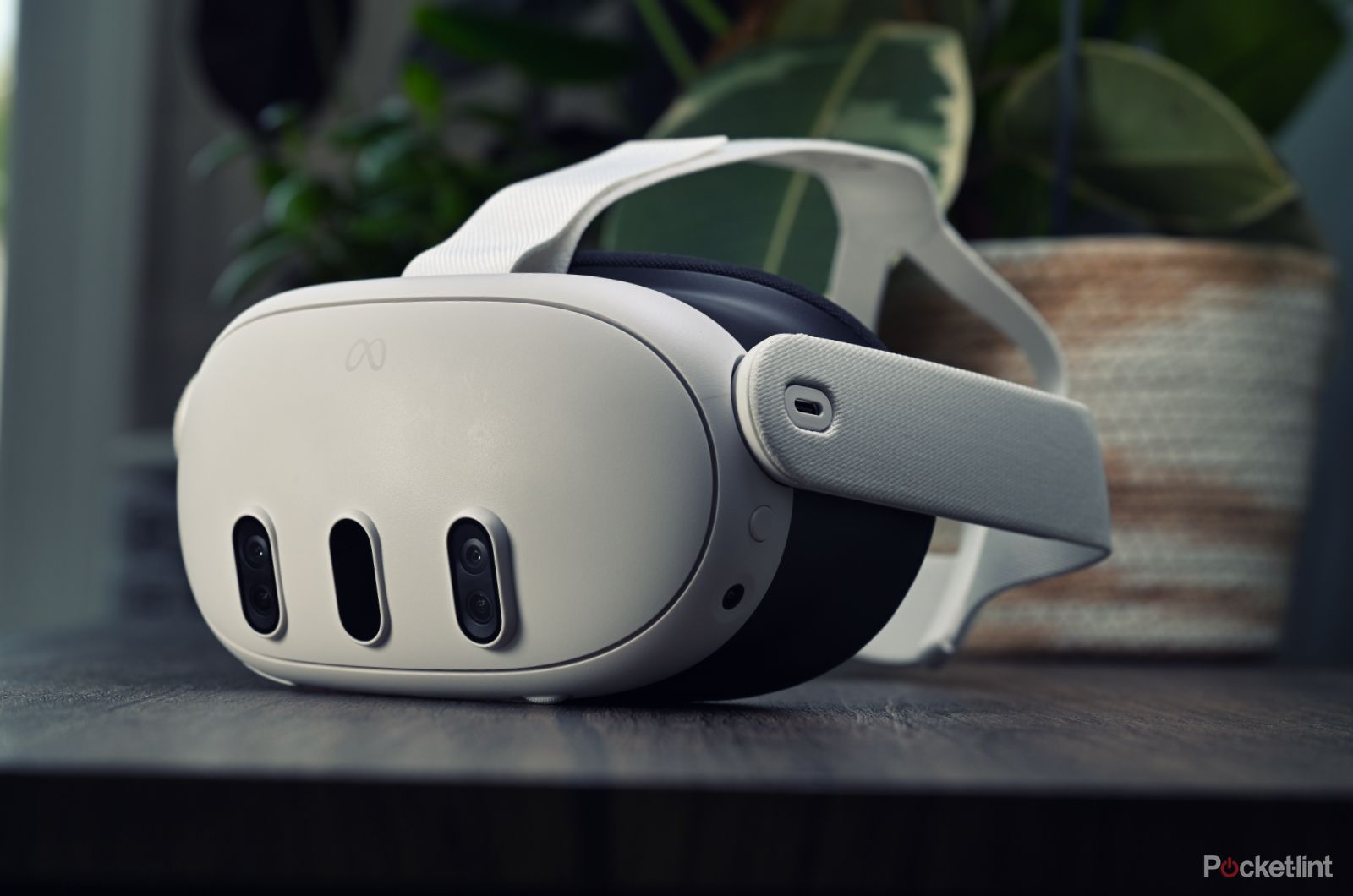
Meta Quest 3 review: Taking standalone VR to the next level
Meta has upgraded its popular Quest headset in just about every conceivable way.
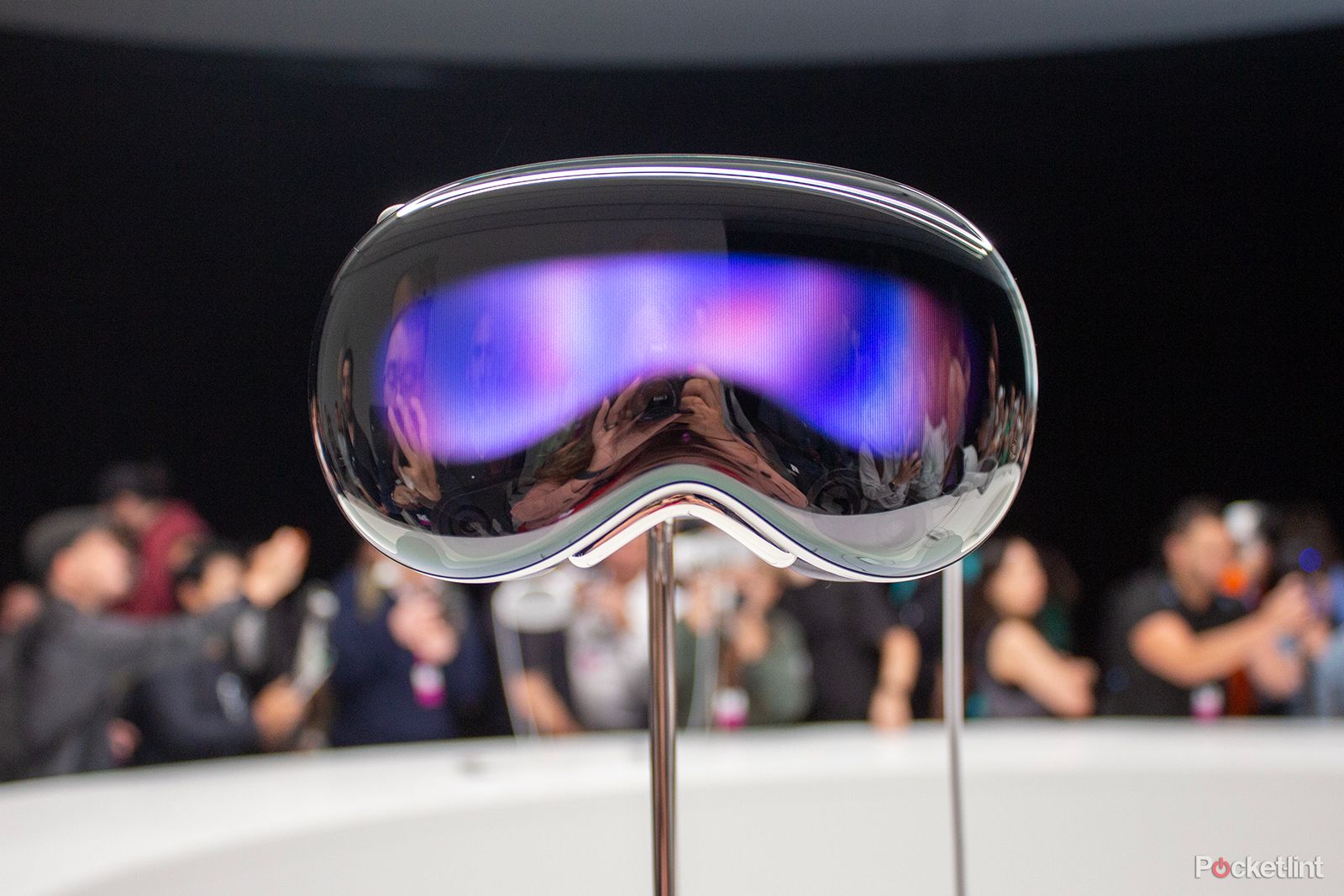
I tried Apple Vision Pro and I wasn’t at all prepared for the experience it delivered
My preview with the Apple Vision Pro opened my eyes to the possibilities of what it can offer.
Display(s) and audio
The Meta Quest 3 uses dual LCD (with mini-LED) pancake lenses with a resolution of 2,064 x 2,208 pixels per eye. It’s a roughly 30% improvement in resolution along with a 15% improvement in field of view over the prior generation of the Meta Quest. In our review, we note the sharp visuals. In terms of FOV, the Meta Quest 3 is 110-degrees horizontally and 96-degrees vertically.
The near-field speakers rest in the headband, just like the Apple Vision Pro, and they get impressively loud, especially compared to the Meta Quest 2. Spatial positioning is also pretty good and improved over the prior generation. Those who want higher audio fidelity can supply their own headphones and use the Quest’s integrated 3.5mm headphone jack.
The Apple Vision Pro’s displays are, quite simply, better. Apple boasts micro-OLED displays with a resolution of 24MP, which translates to approximately 4K resolution. The Meta Quest 3 has the faster display at 120 Hz versus Apple’s 90 Hz, but the micro-OLED displays win out on resolution by a fairly hefty margin. Apple hasn’t revealed the FOV numbers yet, but reports say that it’s likely around 100-degrees horizontally, which gives Meta Quest 3 the win there as well.
For audio, Apple builds the speakers into the headband like the Meta Quest 3. There’s one for each ear and Apple promises spatial audio support, including a feature called Personalized Spatial Audio that works while turning your head. You can plug in headphones, but you’ll have to use the USB-C port to do it as the Apple Vision Pro doesn’t come equipped with a 3.5mm jack.
Overall, it’s tough to assign a winner. The Meta Quest 3 has the wider FOV and more versatility with its 3.5mm jack. However, Apple’s micro-OLED displays are truly incredible, even if the FOV is thinner.

Apple Vision Pro: Everything you need to know about the Apple VR headset
Apple has announced its mixed reality headset, looking to start a new chapter in spatial computing.
Passthrough cameras and mixed reality
Both headsets put a lot of emphasis on the pass-through cameras for the purposes of mixed reality. The Meta Quest 3 has cameras built into the front of the headset with a depth sensor in the central pill-shaped hole. When activated, the cameras show your surrounding area, so you can see real life through the headset.
In natural light, the cameras do quite well with natural color reproduction and decent sharpness. However, dimly lit rooms suffer from grain and noise. If that’s all you’re looking at, then you’ll definitely notice. In a mixed reality experience, there will be other elements to focus on, which helps distract from the low light woes.
Mixed reality is a pretty big focus for Meta when marketing the Quest 3. There’s a whole section about it on the official website. The Quest 3 is a fairly massive step forward from the Quest 2 thanks to the camera improvements . You likely won’t watch TV or read through it, but games like First Encounter, I Expect You To Die: Home Sweet Home, and Drop Dead: The Cabin are great examples of what MR is capable of.
Unfortunately, we don’t have a ton of information about the Vision Pro’s cameras and mixed reality experiences. The device has a total of 12 cameras, five sensors, and six microphones. That includes LIDAR cameras for capturing 3D information and motion sensors for head movement and eye tracking.
We’ll have to wait to review the device to see how good the cameras will be for the purposes of mixed reality. However, you can use them to record spatial videos, which we thought were just fantastic in our hands on. It’s clear Apple is positioning the Vision Pro to be mostly for entertainment and productivity, so the company will certainly have a major focus on its pass-through cameras to ensure high quality results.
Since the Apple Vision Pro doesn’t have controllers like the Meta Quest 3, game developers will likely find the headset difficult to work on. The headset relies on hand gestures seen through the pass-through cameras for navigation and general use. That may be a bit wonky for game devs, but it’ll be quite nice to use from a productivity and entertainment standpoint.
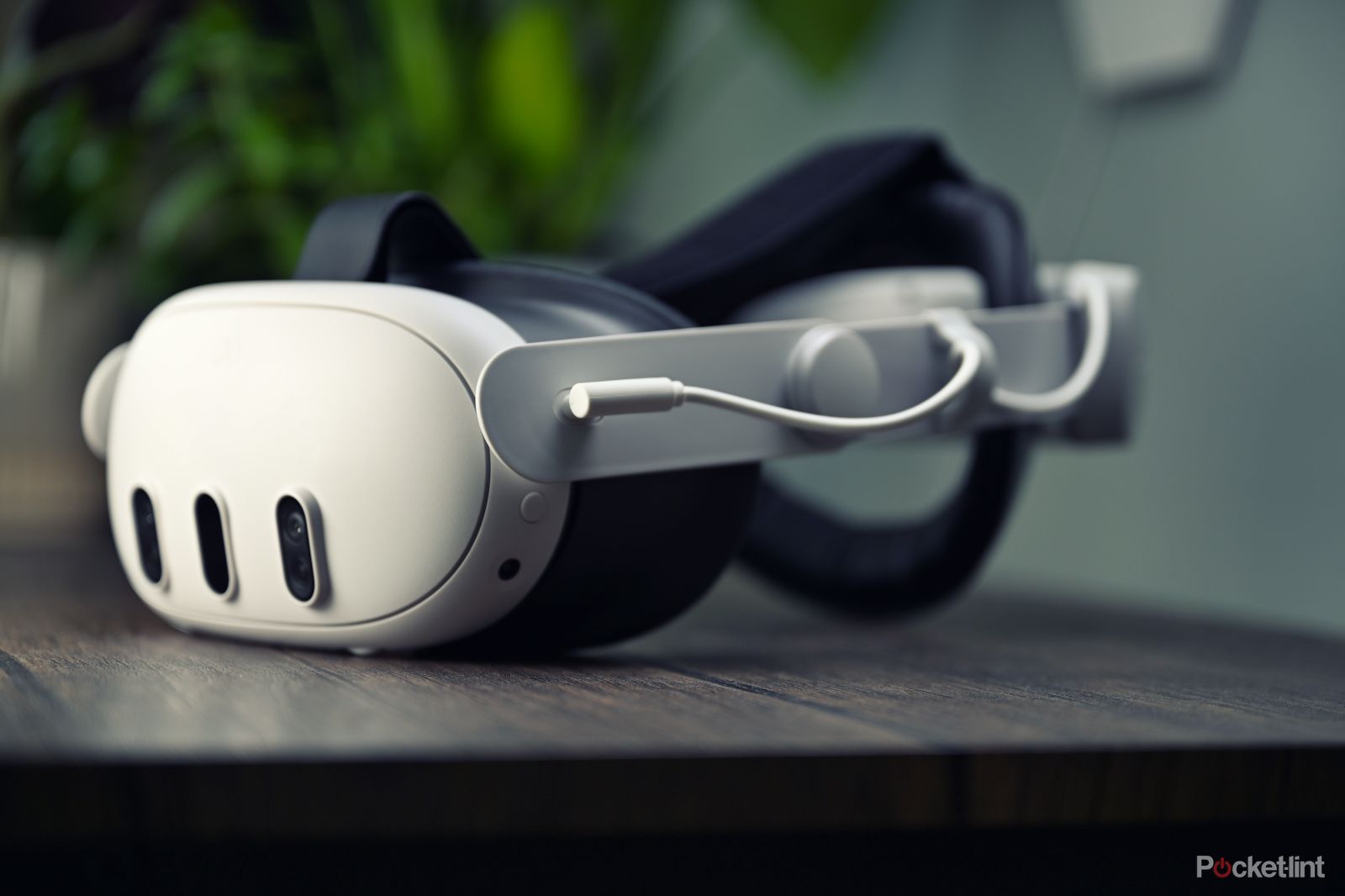
Meta Quest 3 tips and tricks: Get more from your new VR headset
If you’ve invested in a Quest 3 headset or recently received one as a gift, you’ll want to give these tips and tricks a try.
Performance and software
The Meta Quest 3 uses the Snapdragon XR2 Gen 2 along with 8GB of RAM, making it the most powerful standalone VR headset in the world as of this writing. It also uses Wi-Fi 6E and Bluetooth 5.2 for connectivity, so it should be able to connect to just about anything with the maximum number of features and speeds.
According to our review, the Snapdragon XR2 Gen 2 delivers much better gaming performance while also being more efficient overall. It provides video pass-through with 12ms of latency. That means it looks better and is smoother than most other standalone VR headsets on the market, regardless of what you’re playing or using.
For software, the headset uses Meta’s Quest operating system, which is based on Android. For the software, Quest can definitely use some improvements, but it’s fairly reliable to use and easy to work with. We also noted in our review how the mixed reality setup process made things like room setup a lot easier than it used to be.
The Apple Vision Pro uses Apple’s VisionOS. Based on our hands-on, it looks and feels like something you’d see on an iPhone or iPad, which will be comfortable and familiar for existing Apple users. There weren’t any games during our limited demo experience, but things like gesture controls worked quite well and things like spatial video worked amazingly well.
That’s likely because the Apple Vision Pro is powered by a combination of Apple’s M2 chip and its R1 chip. The former is a Macbook-level processor, which will almost assuredly beat out the Snapdragon XR2 Gen 2 in benchmarks. The latter is specifically designed to control and process the continuous stream of information from the cameras, sensors, and microphones.
For performance, it’s tough to gauge because we don’t have extended experience with the Apple Vision Pro. However, it has better hardware on paper and Apple has always done a great job with software. You’ll have more games to play on the Meta Quest 3, but for entertainment, the Vision Pro will almost certainly reign supreme.
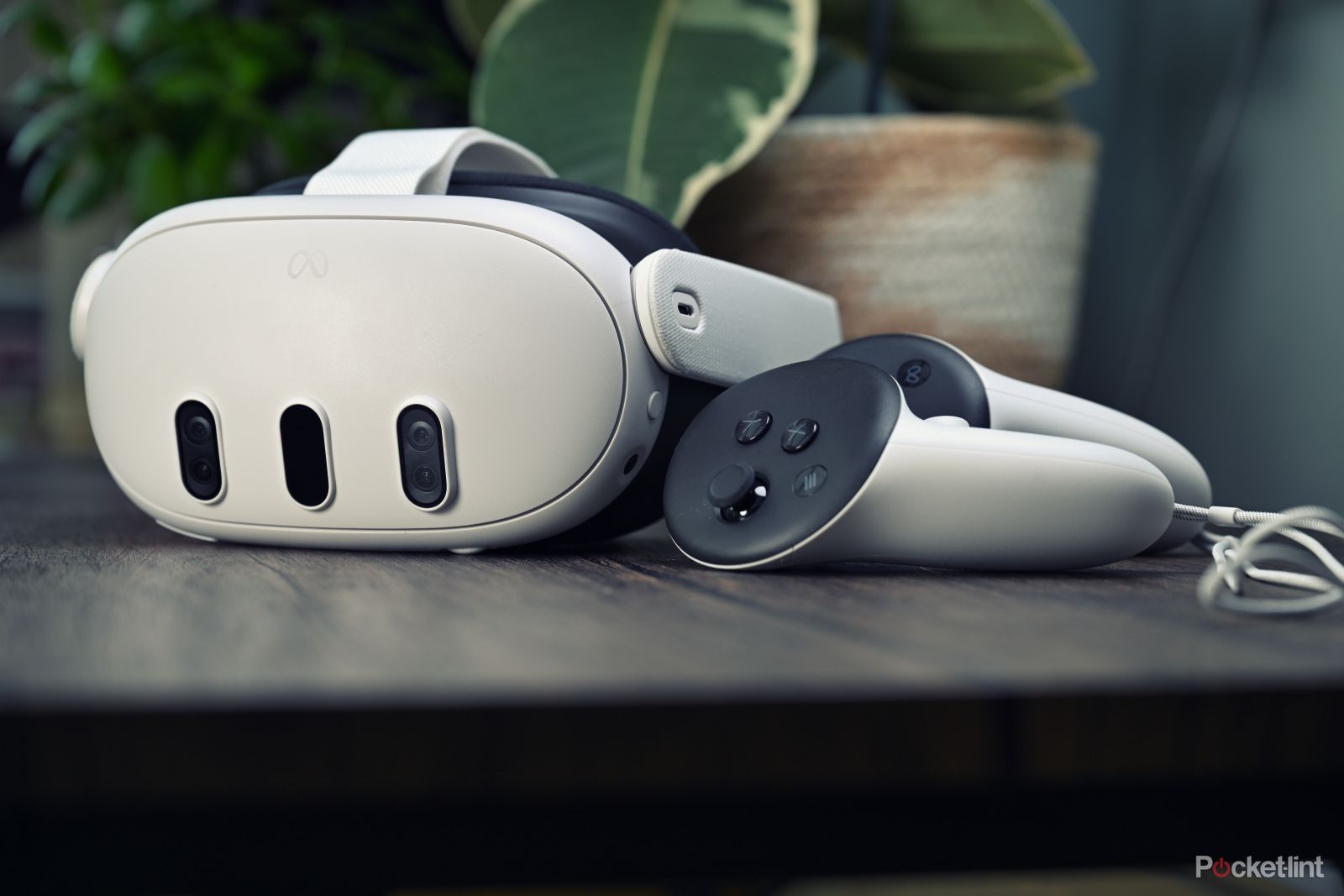
11 awesome Meta Quest 3 games you absolutely have to play
The new VR headset from Meta takes VR to another level. Here are the best games to experience it fully.
Conclusion: Which VR headset is best?
The overall comparison is difficult. These two devices occupy space in the same product category, but they are clearly made for two entirely different types of shoppers. The Meta Quest 3 has mixed reality, games, entertainment, and a lower price tag. It’s clearly designed as the everyday VR headset that most people will be able to afford and use. In this, we think that the Meta Quest 3 succeeds on virtually all levels. Is it perfect? No, but it’s closer than anything else in its price range.
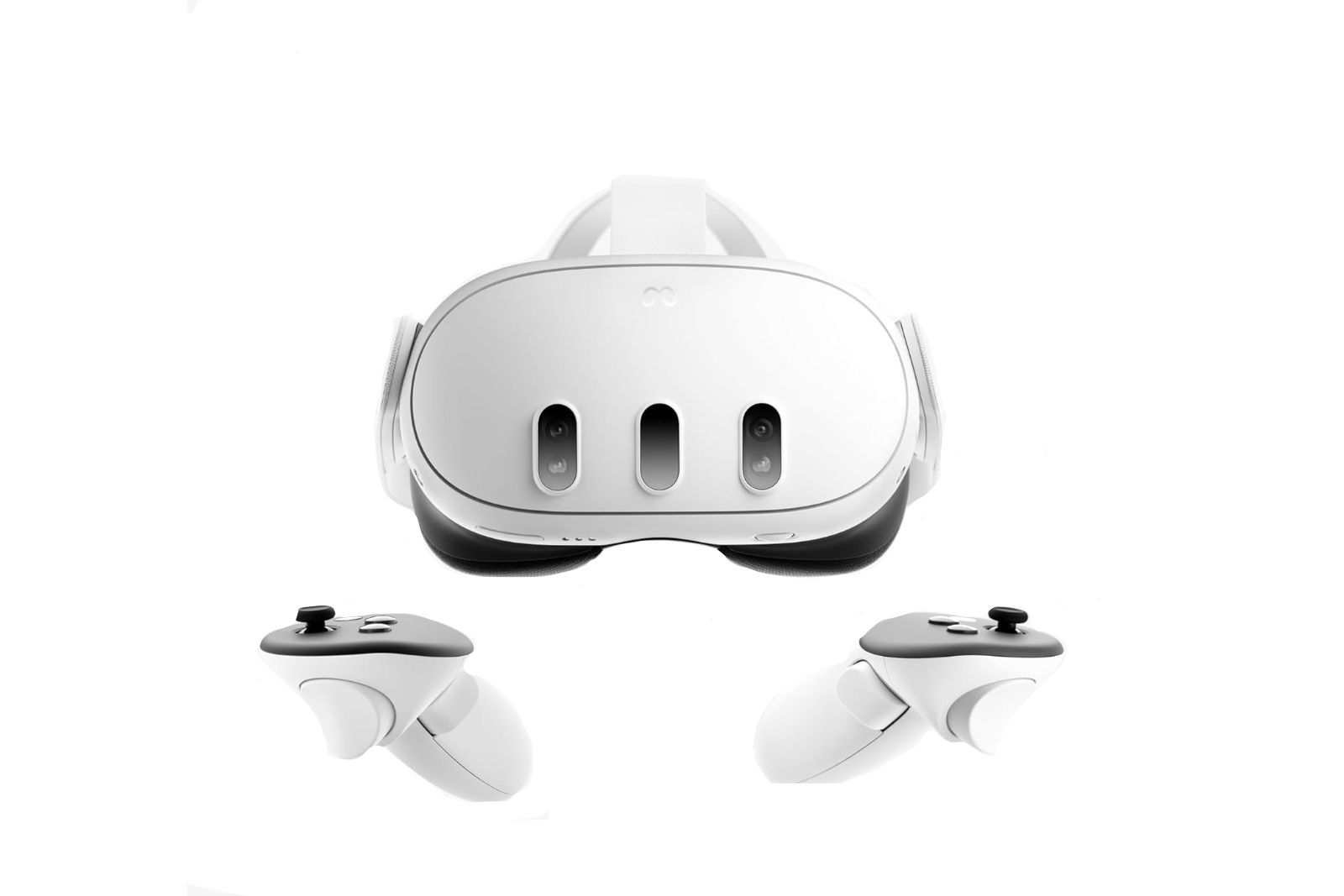
Meta Quest 3
Editor’s Choice
Meanwhile, the Apple Vision Pro is meant to be impressive, and that starts with its price tag. At $3,499, the Apple Vision Pro is meant to be an appliance on par with your TV or laptop. Apple wants this to be an indelible part of your living room experience, from watching TV to experiencing spatial video, and has spent a lot of time and effort making it excel at that thing specifically. If you can afford it, this is where the Vision Pro will shine.
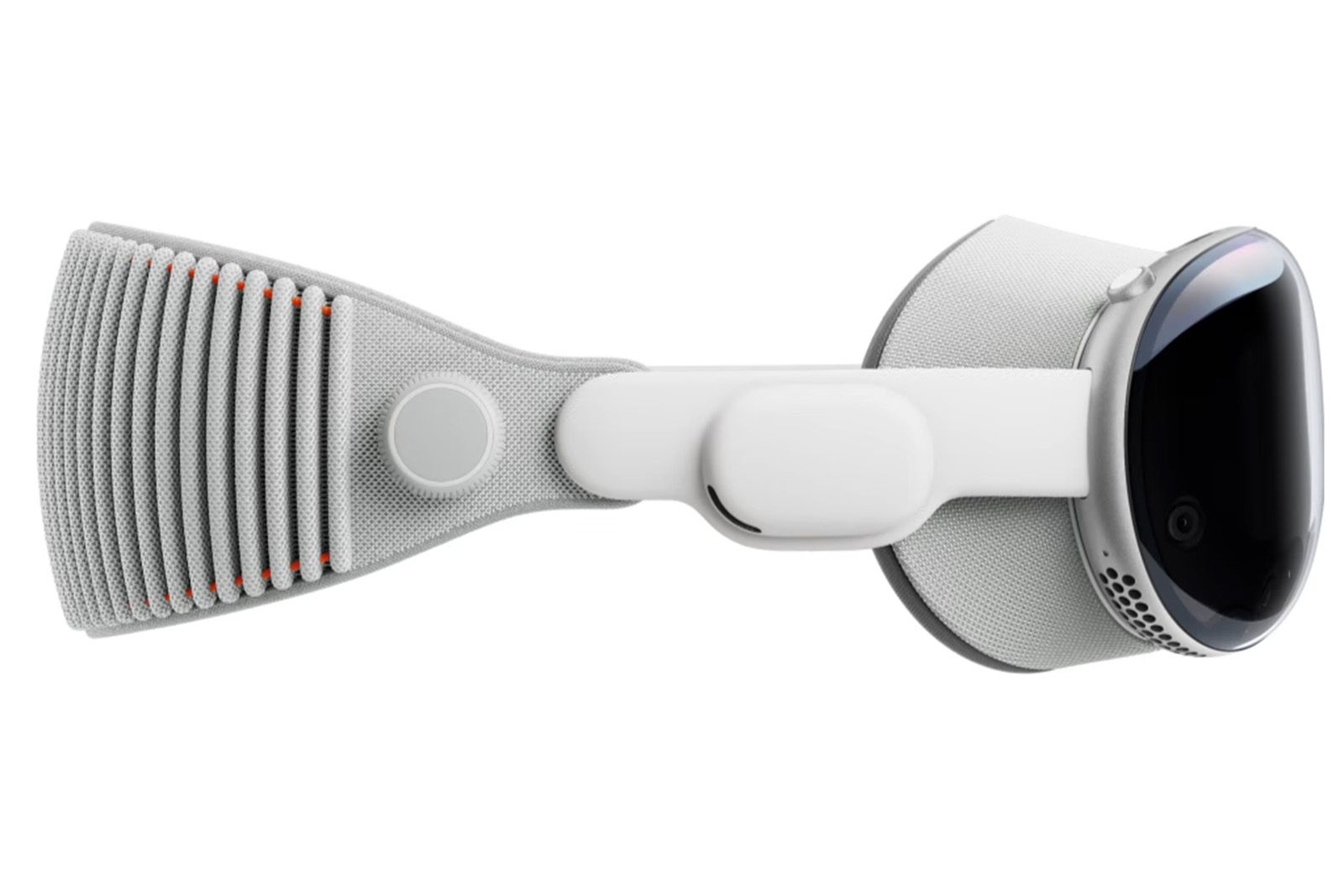
Apple Vision Pro
Best to look out for
It’s honestly a bit weird, because usually two products in the same space have at least some similarities. With these two MR headsets, the only similarity is the battery life, where neither of them can top two and a half hours of continuous use without the need for a charger. They also have the same typical VR headset design, although each company puts their own spin on them.
Oddly enough, the two products otherwise couldn’t possibly be more different. Even the mixed reality experiences they promise are demonstrably different, with the Meta Quest 3 offering more in terms of gaming, while the Vision Pro offers more in terms of entertainment. So, if you have the money, and you want the quickest answer, here it is. The Meta Quest 3 is the best at gaming, while the Vision Pro is the best at basically everything else.
Trending Products

Cooler Master MasterBox Q300L Micro-ATX Tower with Magnetic Design Dust Filter, Transparent Acrylic Side Panel, Adjustable I/O & Fully Ventilated Airflow, Black (MCB-Q300L-KANN-S00)

ASUS TUF Gaming GT301 ZAKU II Edition ATX mid-Tower Compact case with Tempered Glass Side Panel, Honeycomb Front Panel, 120mm Aura Addressable RGB Fan, Headphone Hanger,360mm Radiator, Gundam Edition

ASUS TUF Gaming GT501 Mid-Tower Computer Case for up to EATX Motherboards with USB 3.0 Front Panel Cases GT501/GRY/WITH Handle

be quiet! Pure Base 500DX ATX Mid Tower PC case | ARGB | 3 Pre-Installed Pure Wings 2 Fans | Tempered Glass Window | Black | BGW37

ASUS ROG Strix Helios GX601 White Edition RGB Mid-Tower Computer Case for ATX/EATX Motherboards with tempered glass, aluminum frame, GPU braces, 420mm radiator support and Aura Sync


